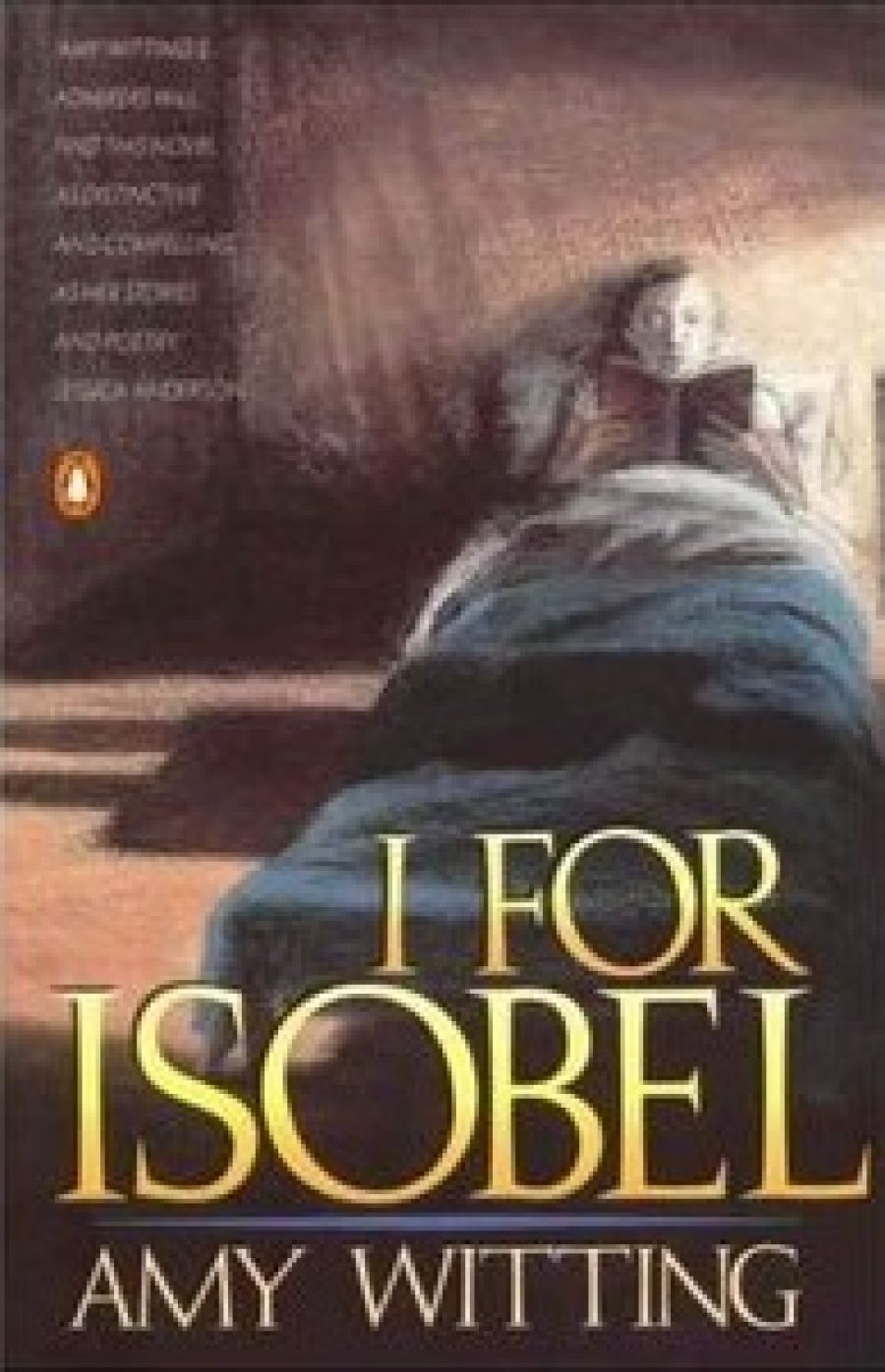
- Free Article: No
- Contents Category: Fiction
- Review Article: Yes
- Online Only: No
- Book 1 Title: I for Isobel
- Book 1 Biblio: Penguin, 158 pp, $12. 99 pb 0-14-012624-4
Early in the work we are aware that there is something about plain, brainy, book-worm Isobel that terrifies her parents. But what? This is the mystery. The Callaghan family presents to society a rigidly maintained facade of ‘respectability’. Isobel, a ‘timid’ child is anxious to please but she finds keeping out of trouble like ‘being asked to walk into a crack in the wall’. Every birthday, Isobel is denied a present. ‘We have to be very careful about money this year.’ ‘It is vulgar to celebrate birthdays away from home.’
On her ninth birthday, Isobel remembers, she had disgraced the family when she ran into the garden shouting ‘It’s my birthday’:
Skinny, crinkled Mr Daubeney had shouted back, ‘Catch this then!’ and spun a two shilling piece in the air. She had caught it in the lap of her skirt – she hadn’t had time to begin to be clumsy – and somebody else had cried out, ‘Here’s another!’ ‘Over here!’ ‘Here you are Isobel!’ She had held up her skirt like a pouch and had caught all the coins, spinning around and laughing, and the grown-ups were laughing too, as she called out, ‘Thank you very much!’ and ran inside with her treasure.
Prose rhythms enhance the image of the laughing child with the silver coins and capture vividly her spontaneity, her spirit. Surely a mother would never want to suppress such a spirit in her child? Witting portrays the mother’s ruthless determination to do just this in a way that is absolutely convincing.
Isobel’s behaviour on her ninth birthday earns her a ‘God Almighty’ belting. Unwittingly Isobel has exposed Mrs Callaghan’s meanness to the outside world. Isobel is confused, frightened, hurt. But the episode has made the child aware that ‘there were things her mother couldn’t do’. And Isobel delights in the discovery.
The early chapters depict a devastating battle of wills. Mother against daughter. ‘Bed’ becomes Isobel’s kingdom, imagined friends and the world of books can protect and sustain. However, her vivid imagination is deliberately misrepresented by her mother as lying, relentlessly and maliciously until Isobel herself accepted the label.
As a child, however, Isobel never totally succumbs. Witting depicts her ‘helpless’ defiance with a humour that makes her vulnerability extremely appealing.
After her mother’s death, eighteen-year-old Isobel’s ‘evil heart’ rejoices ‘in the prospect of freedom and even of new shoes’. But Witting makes us aware of deeper complications. Isobel is unable to grieve and experiences a ‘paralysing sorrow’, even the more so because she realises that her guilt will stay with her.
It would be unrealistic to expect Isobel to survive such a childhood unscathed. Witting doesn’t flinch from this, portraying Isobel’s new life with painful conviction. Isobel is naive and vulnerable. We admire her courage, her determination, her wit, her greed for literature, knowledge, and experience. But she is far from a saint. She is sharp-tongued, socially inept, introverted, and self-absorbed. And of course she has a low selfesteem. Witting has her sink to the pits. She becomes a ‘pervert, a phone freak’:
Crimson, pagoda-roofed, the phone box leered like an evil little joss house for one devil worshipper ... there was always a listener, a puzzled voice giving the cues she wanted, not able to free itself in time.
As a child Isobel completed a tapestry. Presenting it, she was publically humiliated for ‘vulgar bad taste’. Nineteen-year-old Isobel plans a new tapestry. This tapestry motivates her final search, for the ‘I’ of Isobel. Her journey leads her back to her past. A chance encounter triggers off a memory.
To say more would be to reveal all. However, for me, the answer to the mystery is like the placing of the final thread in a complex and extremely moving work of weaving. Only when it is in place do we realise how subtly and meticulously it has been prepared for throughout. It’s a thread that blends perfectly into Witting’s tapestry. The image it completes will take a long time to fade.


Comments powered by CComment